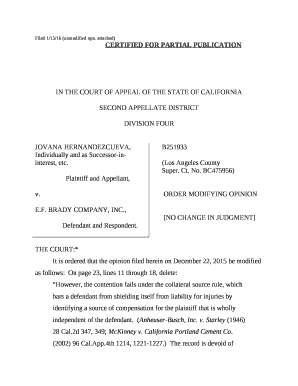Types of accounting functions

Of course, you also have to present everything clearly while effectively interacting with people from every business discipline. Accounting is an essential function of any business, and it involves the recording, analyzing, and reporting of financial transactions. It is a process that enables businesses to keep track of their financial health and make informed decisions based on accurate financial data.
Accounting functions form the backbone of an organization’s financial management, encompassing a range of activities that facilitate the recording, analysis, and reporting of financial transactions. These functions are essential for decision-making, regulatory compliance, and maintaining the financial health of a business. In this comprehensive exploration, we delve into the various accounting functions, their significance, and how they collectively contribute to effective financial management. Because it communicates so much of the information that owners, managers, and investors need to evaluate a company’s financial performance.

This is the practice of recording and reporting financial transactions and cash flows. This type of accounting is particularly needed to generate financial reports for the sake of external individuals and government agencies. These financial statements report the performance and financial health of a business. For example, the balance sheet reports assets and liabilities while the income statement accountant for self employed reports revenues and expenses. Financial accounting is governed by accounting rules and regulations such as U.S. GAAP (Generally Accepted Accounting Principles) and IFRS (International Financial Reporting Standards).
Key Financial Statements
The whole point is to give you an idea of what’s working and what’s not working so that you can fix it. Accounting provides information on the financial health and stability of a company. Financial analysts use this information to assess the liquidity and solvency of a company. Liquidity refers to best procurement software for small and midsize businesses the ability of a company to meet its short-term obligations, while solvency refers to the ability of a company to meet its long-term obligations. Financial analysts use ratios such as the quick ratio and debt-to-equity ratio to assess the liquidity and solvency of a company.
Managerial Accounting
For example, imagine a company receiving a $1,000 payment for a consulting job to be completed next month. Under accrual accounting, the company is not allowed to recognize the $1,000 as revenue, as it has technically not yet performed the work and earned the income. The internal auditing group examines company processes and controls to spot control weaknesses, fraud, waste, and mismanagement. They can also advise on the best control systems to apply to different processes, or how to alter existing controls. Their work benefits both the management team (by eliminating excessive expenditures) and investors (by reducing the risk of loss).
Accounting functions extend beyond mere recording to classifying and categorizing transactions. This step involves allocating transactions to specific accounts based on their nature, such as assets, liabilities, equity, income, or expenses. A well-organized chart of accounts facilitates this process, ensuring accurate financial classification. It’s most commonly done by financial accountants to ensure that the company’s financial statements comply with the Generally Accepted Accounting Principles (GAAP) standards.
- Cost accounting is a kind of managerial accounting dealing with the cost structure of the business.
- In short, although accounting is sometimes overlooked, it is absolutely critical for the smooth functioning of modern finance.
- Accounting also involves analyzing financial data to identify trends and patterns, as well as forecasting future financial performance.
- It provides business owners and managers with the information they need to make informed decisions and ensure the financial health of their company.
Types of accounting functions
In the U.S., licensed CPAs must have earned their designation from the American Institute of Certified Public Accountants (AICPA). One of the most common career paths in accounting is becoming a financial planner. Financial planners are responsible for helping clients manage their finances and plan for their financial future. They work with clients to create budgets, invest in stocks and bonds, and plan for retirement. Cost accounting includes the calculation of direct and indirect costs, such as labor, materials, and overhead. This type of accounting is commonly used in manufacturing and service industries.
Tax Accounting
A balance sheet is used by management, lenders, and investors to assess the liquidity and solvency of a company. Through financial ratio analysis, financial accounting allows these parties to compare one balance sheet account with another. The users of managerial accounting information are pretty easy to identify—basically, they’re a firm’s managers. The management accounting group examines the financial and operational results of what is inventory meaning definition examples a business, looking for opportunities to enhance the results and financial position of the entity. This group may participate in cost analysis projects throughout an organization. Tax accounting is the process of preparing and filing tax returns in compliance with tax regulations.
It allows companies to manage their financial transactions, create reports, and keep track of their financial health. Accounting also helps businesses to monitor their financial performance and identify areas that need improvement. By analyzing financial data, businesses can identify trends and patterns that may indicate potential problems or opportunities. For example, a business may use accounting information to identify areas where they can reduce expenses or increase revenue. Financial accounting is the process of recording, summarizing, and reporting a company’s financial transactions to external users, such as investors, creditors, and regulators.
Accounting is a back-office function where employees may not directly interface with customers, product developers, or manufacturing. However, accounting plays a key role in the strategic planning, growth, and compliance requirements of a company. These four largest accounting firms (Ernst & Young, KPMG, PricewaterhouseCoopers, Deloitte) conduct audit, consulting, tax advisory, and other services. These firms, along with many other smaller firms, comprise the public accounting realm that generally advises financial and tax accounting. This institute created many of the systems by which accountants practice today. The formation of the institute occurred in large part due to the Industrial Revolution.

